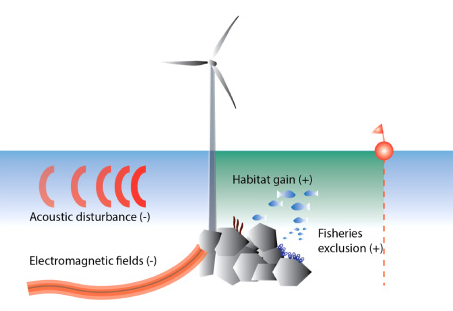Beyond BMW And Porsche: A Wider Look At Foreign Automakers' China Issues

Table of Contents
Navigating China's Regulatory Landscape
The regulatory environment in China is a significant hurdle for foreign automakers. Understanding and adapting to these regulations is crucial for success.
Stringent Emission Standards and Local Content Requirements
China's commitment to environmental protection has resulted in increasingly stringent emission standards. Meeting these requires substantial investment in research and development (R&D) for compliant vehicles. Simultaneously, local content requirements mandate that a certain percentage of vehicle components be sourced domestically. This impacts supply chains, production costs, and overall profitability.
- Specific Regulations and Impact:
- NEV Mandates: The New Energy Vehicle (NEV) mandates require automakers to produce or sell a certain percentage of electric vehicles (EVs) and plug-in hybrid electric vehicles (PHEVs), impacting production strategies and requiring significant investment in EV technology.
- Fuel Efficiency Standards: China's fuel efficiency standards, constantly becoming stricter, pressure automakers to develop more fuel-efficient engines and lighter vehicle designs.
- CAFC (Corporate Average Fuel Consumption): Failure to meet CAFC targets results in substantial penalties, impacting the financial performance of foreign automakers in China.
Bureaucratic Hurdles and Market Access Restrictions
Navigating the Chinese bureaucratic system is notoriously complex. Obtaining the necessary licenses and approvals for production, sales, and distribution can be a lengthy and challenging process, often involving multiple government agencies. Furthermore, market access limitations in specific regions or vehicle segments can further restrict growth potential for foreign players.
- Bureaucratic Processes and Difficulties:
- Licensing and Approvals: Obtaining production licenses, sales permits, and import/export licenses can involve extensive paperwork, multiple inspections, and lengthy delays.
- Homologation: The process of obtaining type approval for vehicles in China is complex and requires extensive testing and documentation.
- Regional Restrictions: Certain regions may impose additional restrictions on foreign automakers, limiting their market reach.
Competition from Domestic Automakers
The rise of domestic Chinese automakers presents a formidable challenge to foreign brands. These companies are rapidly innovating, offering competitive vehicles at attractive price points, and aggressively expanding their market share.
Rise of Domestic Brands and Technological Advancement
Chinese automakers are not just competing on price; they are rapidly advancing in technology. The development of EVs and autonomous driving technologies is particularly significant. Domestic brands are often quicker to adopt and integrate these advancements, putting pressure on established foreign players.
- Market Share Comparison: Data consistently shows a growing market share for domestic Chinese brands, often at the expense of some foreign automakers, highlighting the competitive landscape. (Specific data and sources can be inserted here).
Strategic Partnerships and Joint Ventures
To overcome some of the challenges, many foreign automakers have entered into joint ventures with Chinese partners. These partnerships offer access to the market, navigate regulatory hurdles, and leverage local expertise. However, such ventures also present potential challenges in terms of management, intellectual property protection, and strategic alignment.
- Joint Venture Examples: (Examples of successful and unsuccessful joint ventures should be cited here with explanations).
Consumer Preferences and Marketing Strategies
Understanding and adapting to the unique preferences of Chinese consumers is critical for success. These preferences differ significantly from those in Western markets.
Understanding Unique Chinese Consumer Demands
Chinese consumers place emphasis on different aspects of a vehicle compared to their Western counterparts. Factors like brand image, technological features, and fuel efficiency play a crucial role in purchasing decisions. Ignoring these unique preferences can lead to market failure.
- Key Differences in Consumer Preferences:
- Brand Image: Certain brands hold more prestige and appeal in the Chinese market compared to others.
- Technological Features: Chinese consumers often prioritize advanced technological features and connectivity options.
- Fuel Efficiency: With increasing environmental concerns, fuel efficiency is becoming a more significant factor in purchasing decisions.
Effective Digital Marketing and Localized Branding
The high penetration of mobile internet and social media in China necessitates a strong digital marketing presence. Furthermore, localization of branding and marketing materials is essential to resonate with Chinese consumers. A one-size-fits-all approach is unlikely to succeed.
- Successful Digital Marketing Campaigns: (Examples of effective digital marketing campaigns targeted at the Chinese market should be provided here).
Conclusion
The Chinese automotive market presents significant opportunities for foreign automakers, but success requires a nuanced understanding of the complex regulatory environment, intense competition from domestic brands, and the unique preferences of Chinese consumers. Successfully navigating foreign automakers China issues requires strategic partnerships, significant investment in R&D and localization, and a deeply insightful approach to marketing and branding. Ignoring these challenges can lead to market failure. To learn more about successfully navigating the intricacies of this vital market, continue your research into foreign automakers China issues and discover how to overcome the challenges and leverage the immense potential.

Featured Posts
-
 Hudsons Bay Brand Acquisition Toronto Firm Faces Stiff Competition
May 03, 2025
Hudsons Bay Brand Acquisition Toronto Firm Faces Stiff Competition
May 03, 2025 -
 Justice Departments Decision The Future Of School Desegregation
May 03, 2025
Justice Departments Decision The Future Of School Desegregation
May 03, 2025 -
 Chinese Maritime Activity Off Sydney Coast A New Normal
May 03, 2025
Chinese Maritime Activity Off Sydney Coast A New Normal
May 03, 2025 -
 The Rising Cost Of Offshore Wind Impact On Investment
May 03, 2025
The Rising Cost Of Offshore Wind Impact On Investment
May 03, 2025 -
 La Retorica Nucleare Di Medvedev Implicazioni Per La Sicurezza Europea E La Russofobia
May 03, 2025
La Retorica Nucleare Di Medvedev Implicazioni Per La Sicurezza Europea E La Russofobia
May 03, 2025
 The Reform Party Needs New Leadership The Case For Rupert Lowe
The Reform Party Needs New Leadership The Case For Rupert Lowe
 Farage Faces Backlash Criticism Mounts Over Zelenskyy Remarks
Farage Faces Backlash Criticism Mounts Over Zelenskyy Remarks
